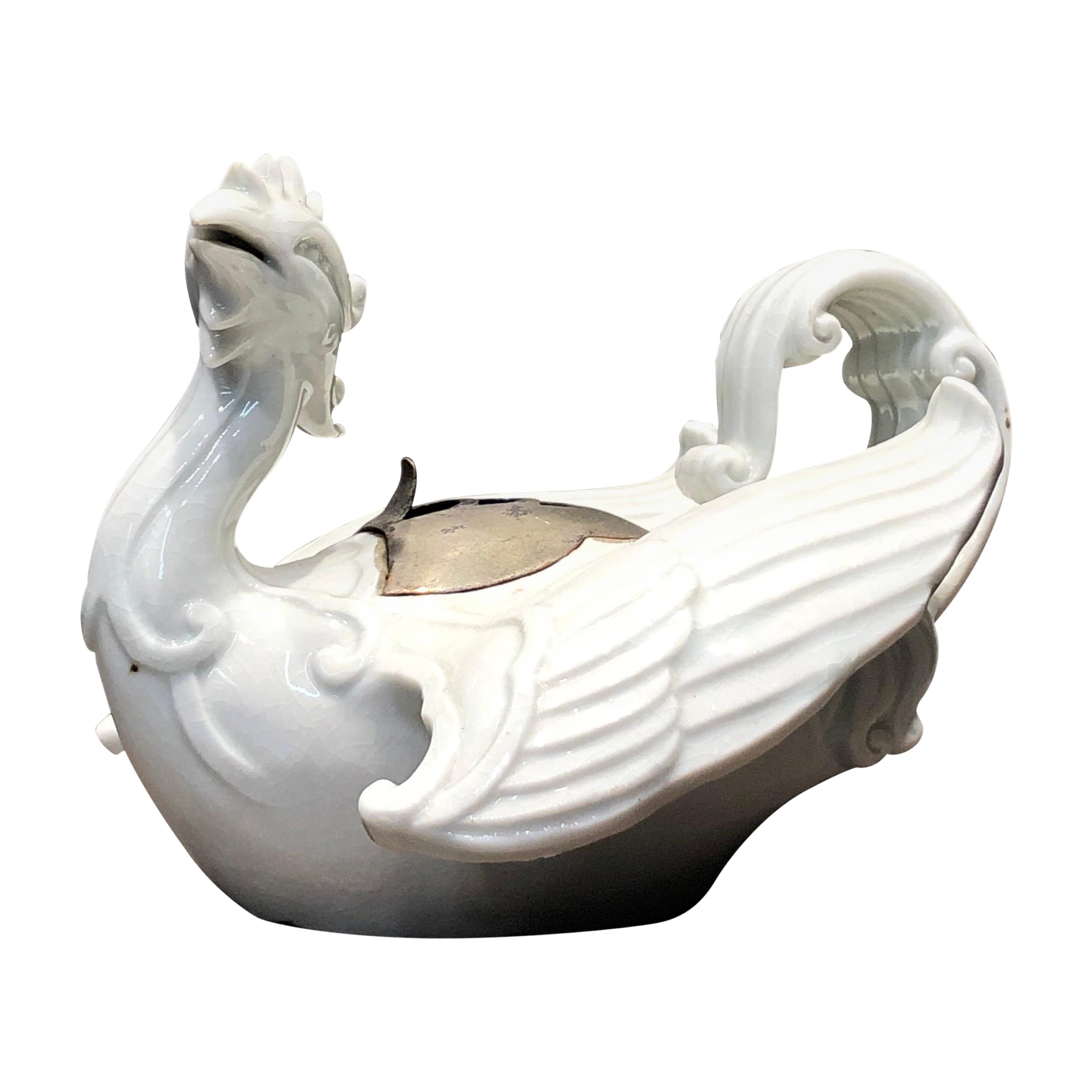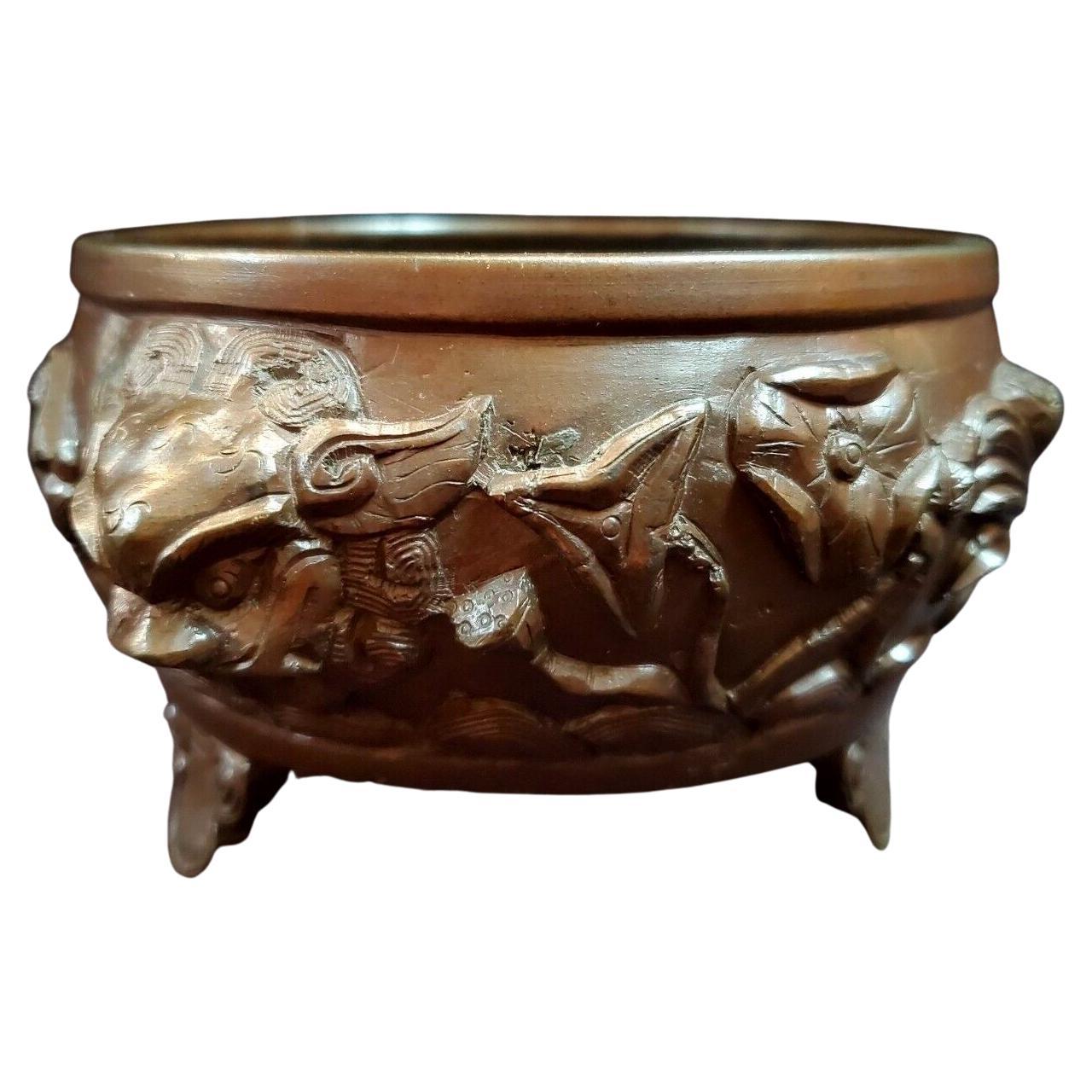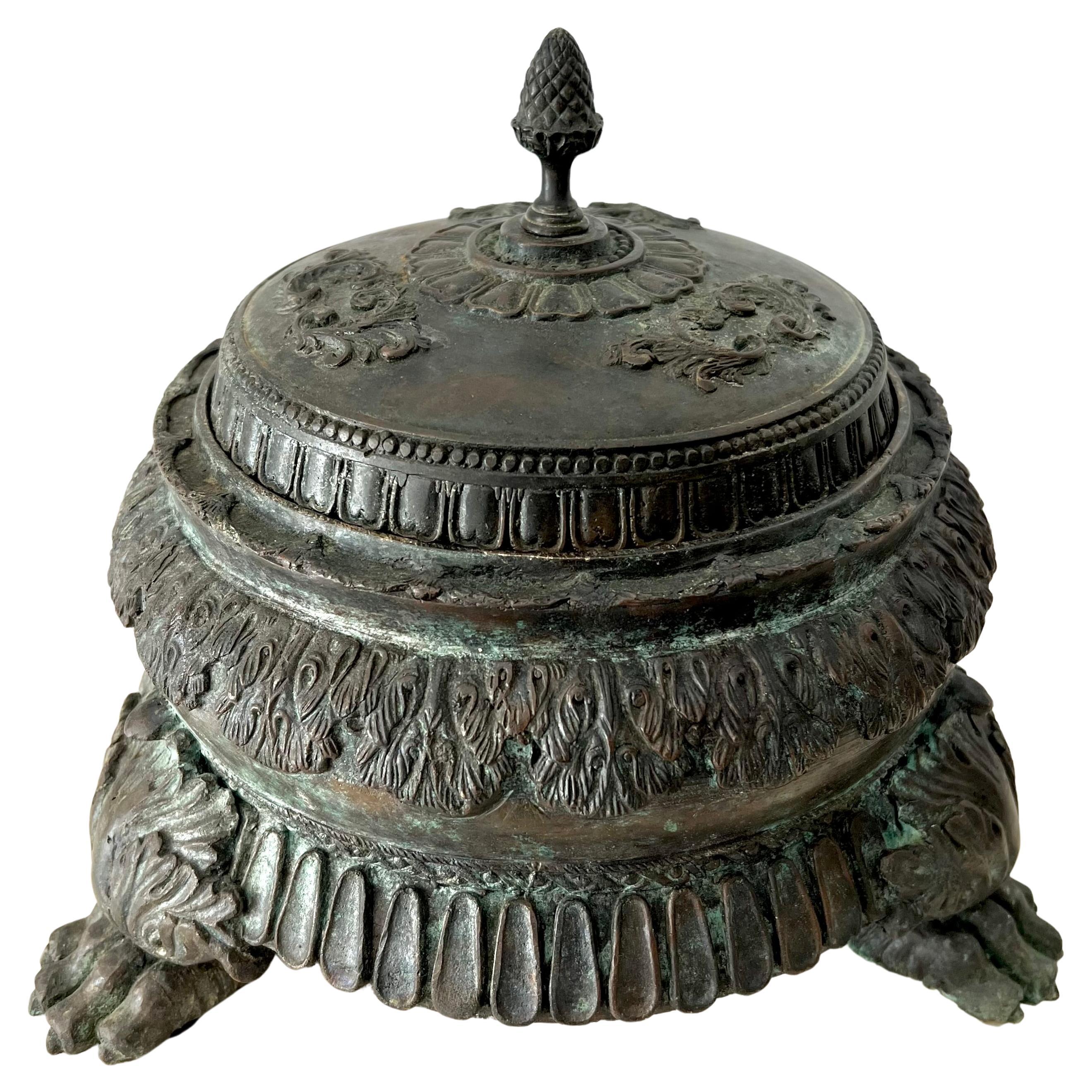Items Similar to Rare Chinese Antique Bamboo Incense Burner, Qing period
Want more images or videos?
Request additional images or videos from the seller
1 of 10
Rare Chinese Antique Bamboo Incense Burner, Qing period
About the Item
This is a rare ding-shaped incense burner using bamboo.
Ding (鼎) is a tool used in ancient Chinese magical rituals, and while bronze ware is common, this piece is made of bamboo. It is difficult to hand-weave and work with the inner skin of stretched bamboo. This materials and techniques were often used in court art.
- Dimensions:Height: 11.03 in (28 cm)Width: 11.03 in (28 cm)Depth: 5.32 in (13.5 cm)
- Materials and Techniques:
- Period:
- Date of Manufacture:Qing period
- Condition:Wear consistent with age and use.
- Seller Location:Chuo-ku, JP
- Reference Number:
About the Seller
5.0
Vetted Seller
These experienced sellers undergo a comprehensive evaluation by our team of in-house experts.
Established in 1995
1stDibs seller since 2022
- ShippingRetrieving quote...Ships From: Chuo-ku, Japan
- Return PolicyA return for this item may be initiated within 14 days of delivery.
More From This SellerView All
- White China Fenix Figured Incense Burner, Edo PeriodLocated in Chuo-ku, TokyoIncense burner with three-dimensional molding of Hirado ware(Origin in Hirado, Nagasaki prefecture) of the Edo period. Hirado ware is very famous for it...Category
Antique 18th Century Japanese Antiquities
MaterialsPorcelain
- Chinese Antique Flower Vase, Qing PeriodLocated in Chuo-ku, TokyocaptionCategory
Antique 18th Century Chinese Qing Antiquities
MaterialsPorcelain
- Chinese Antique Blue and White China, Qing PeriodLocated in Chuo-ku, TokyoAssumed to be used as a container of fresh water for replenishing the kettle and rising bowls at tea ceremony. With the pattern of Ice Clack, Bamboo and Pine Tree and Plum Blossom de...Category
Antique 19th Century Chinese Qing Antiquities
MaterialsPorcelain
- Gold Plated Bronze Duck Figured Incense Case, Qing PeriodLocated in Chuo-ku, TokyoInscence case with pretty shape of duck. Beautifully detailed workmanship.Category
Antique 17th Century Chinese Qing Antiquities
MaterialsBronze
- Chinese Antique Ink-Stone Case with Chinese Children Design, Qing PeriodLocated in Chuo-ku, TokyoThis round lidded container was made in the late Qing Dynasty. It is thought to have been used as a container for incense or red ink at the time. It is decorated with a lovely design of playing Chinese children using the technique of powder painting. The very delicate brushwork vividly depicts the movements of the Chinese children. The Chinese children are carrying crowns in the garden, playing with playing with dragon lanterns...Category
Antique 19th Century Antiquities
MaterialsPorcelain
- Chinese Antique Porcelein Tureen Withmashroom Shaped Lid, Qing PeriodLocated in Chuo-ku, TokyoThis porcelain was baked in Jingdezhen in the Qing dynasty, and since the very beautiful green color of the porcelain similar to early spring's beans, this coloring is called "blue bean glaze". Using the embossing technique, it expresses a beautiful and three-dimensional design. With the sign of "??????" (made in the era of Qianlong emperor...Category
Antique 17th Century Chinese Qing Antiquities
MaterialsPorcelain
You May Also Like
- Qing, Early Period, High Relief Lotus Leaf Pattern Copper Incense BurnerLocated in San Gabriel, CAQing, Chinese antique early period high relief lotus leaf pattern copper incense burner/ ?,?? ?????????. Condition:Shows normal sign of wear and...Category
Antique Early 18th Century Chinese Antiquities
MaterialsBronze
- Chinese Bronze Incense Burner or CenserLocated in Los Angeles, CAChinese Bronze Censor believe to be from the 1800's. The pice is very substantial and heavy - the lid removes to reveal a solid bronze platform for incense. A wonderful piece and hig...Category
Antique 19th Century Chinese Antiquities
MaterialsBronze
- 19th Century Antique Chinese Bronze Censer, Incense BurnerLocated in Stamford, CTA bronze censer or also known as a incense burner from the 19th century. This incense burner has great detailing with handles in the shape of bonsai trees. The center section has a e...Category
Antique 19th Century Chinese Antiquities
MaterialsBronze
- Antique Bronze Chinese Foo Lion Incense Burner - Marked Ming DynastyLocated in Newmanstown, PAAntique Bronze Chinese Foo Lion Incense Burner - Marked Ming Dynasty - H 6" x W 3" x L 6"Category
Antique 16th Century Chinese Ming Antiquities
MaterialsBronze
- Bronze Bird Incense Burner, China, 19th CenturyLocated in Paris, FRBronze bird incense burner. China, 19th century.Category
Antique 19th Century Chinese Antiquities
MaterialsBronze
- Rare Boshan Incense Burner Yue Celadon, Jin dynastyLocated in seoul, KRThe Boshan incense burner is particularly notable among Han dynasty incense burners for its unique shape. Designed to resemble a mountain or even a mythical mountain, it is characterized by its pointed peaks that rise upwards. These peaks often function as vents for the smoke, creating an effect reminiscent of a volcanic eruption. The body of the incense burner is typically round, with multiple small peaks surrounding a central, larger peak. The material used is mainly ceramic, although there are instances where they were made of bronze. It is presumed that this incense burner was used for religious or ceremonial purposes during its time. The colors of these burners are usually in shades of pale green or greyish brown, with the application of glaze to achieve a variety of colors on occasion. Such incense burners are often found in tombs or ritual sites, and their purpose was to burn incense for purification of space or to produce pleasant aromas. The Boshan incense burner also represents a significant cultural heritage, showcasing the craftsmanship and artistic values of the period. Today, it is considered a quintessential example of ancient Chinese art. Period : Han-Jin Dynasty Type : Incense Burner Medium : Yue celadon...Category
Antique 15th Century and Earlier Chinese Han Antiquities
MaterialsStoneware





